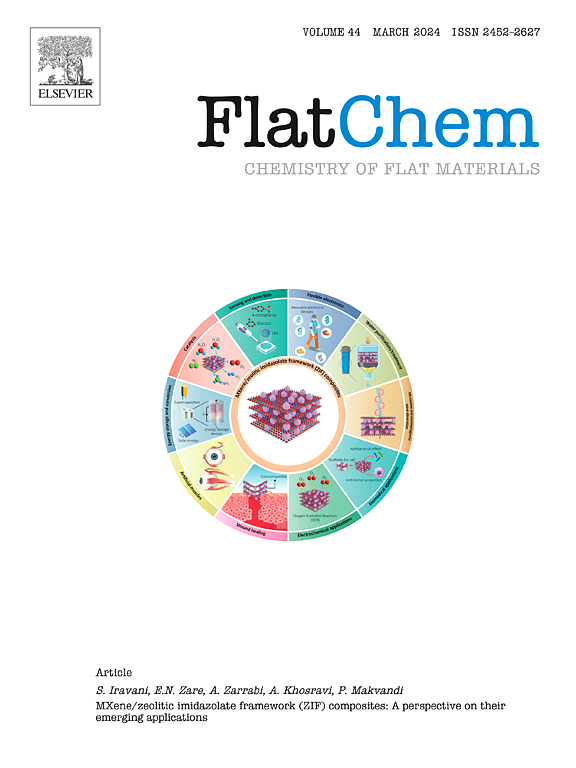Achieving synchronously high thermal conductivity and breakdown strength in PVA modulated via multiple ordered liquid crystal domains
IF 6.2
3区 材料科学
Q2 CHEMISTRY, PHYSICAL
引用次数: 0
Abstract
Polyvinyl alcohol (PVA) composites with concurrently high thermal conductivity (k) and breakdown strength (Eb) are highly desirable in various industry circle, however, high loading of inorganic fillers necessary for achieving a large k inevitably deteriorates the Eb, optical and mechanical performances of the composites. In this work, two kinds of liquid crystal (LC) organic molecules of 4,4′-bis(6-hydroxyloxy) biphenyl (BHHBP) and 4,4′-dihydroxydiphenyl (DOD), were employed to engineer ordered structure in PVA for simultaneously elevated k and Eb along with good mechanical and optical performances. This paper reveals how to achieve this goal via changing the mesogenic units into ordered domains in PVA via a self-assembly process. The findings indicate that the PVA dispersed with BHHBP and DOD showcase evidently higher k owing to the self-assembled ordered domains, paving highways for phonon transport leading to boosted k compared with neat PVA. Further, these multiple domains not only effectively impede long-distance charge migration, but also induce traps to capture charge carriers subsequently resulting in enhanced Eb. Therefore, the high k and Eb coupled with good mechanical flexibility and transparency, are concurrently achieved in PVA via inducing ordered LC domains and regulating their spatial dispersion in host matrix, which cannot be accomplished in traditional PVA composites. The developed PVA films with BHHBP domains present the synchronously high k (0.53 W/(m·K)) and Eb (95.3 kV/mm), low dielectric permittivity (3.0, 103 Hz) and loss (0.035), along with good mechanical and optical performances, demonstrating promising potential utilizations in high frequency electronics and high-voltage power systems.

在通过多个有序液晶域调制的聚乙烯醇中实现同步高导热性和击穿强度
聚乙烯醇(PVA)复合材料同时具有高导热系数(k)和高击穿强度(Eb),在各个工业领域都是非常理想的,然而,为实现大k所需的高无机填料的高负荷不可避免地会降低复合材料的Eb、光学和机械性能。采用4,4′-双(6-羟基)联苯(BHHBP)和4,4′-二羟基联苯(DOD)两种液晶(LC)有机分子在同时升高k和Eb的PVA中构建有序结构,并具有良好的机械和光学性能。本文揭示了如何通过自组装过程将PVA中的介生单元转变为有序结构域来实现这一目标。结果表明,与纯PVA相比,与bhbp和DOD分散的PVA由于自组装的有序结构域而表现出明显更高的k,为声子输运铺平了道路,导致k的提高。此外,这些多结构域不仅有效地阻碍了长距离电荷迁移,而且还诱导陷阱捕获载流子,从而导致Eb增强。因此,通过诱导有序LC结构域并调节其在基体中的空间弥散,在PVA中同时获得了高k和高Eb以及良好的机械柔韧性和透明度,这在传统的PVA复合材料中是无法实现的。所制备的具有BHHBP结构域的PVA薄膜具有同步高k (0.53 W/(m·k))和高Eb (95.3 kV/mm),低介电常数(3.0,103 Hz)和低损耗(0.035),以及良好的机械和光学性能,在高频电子和高压电力系统中具有潜在的应用前景。
本文章由计算机程序翻译,如有差异,请以英文原文为准。
求助全文
约1分钟内获得全文
求助全文
来源期刊

FlatChem
Multiple-
CiteScore
8.40
自引率
6.50%
发文量
104
审稿时长
26 days
期刊介绍:
FlatChem - Chemistry of Flat Materials, a new voice in the community, publishes original and significant, cutting-edge research related to the chemistry of graphene and related 2D & layered materials. The overall aim of the journal is to combine the chemistry and applications of these materials, where the submission of communications, full papers, and concepts should contain chemistry in a materials context, which can be both experimental and/or theoretical. In addition to original research articles, FlatChem also offers reviews, minireviews, highlights and perspectives on the future of this research area with the scientific leaders in fields related to Flat Materials. Topics of interest include, but are not limited to, the following: -Design, synthesis, applications and investigation of graphene, graphene related materials and other 2D & layered materials (for example Silicene, Germanene, Phosphorene, MXenes, Boron nitride, Transition metal dichalcogenides) -Characterization of these materials using all forms of spectroscopy and microscopy techniques -Chemical modification or functionalization and dispersion of these materials, as well as interactions with other materials -Exploring the surface chemistry of these materials for applications in: Sensors or detectors in electrochemical/Lab on a Chip devices, Composite materials, Membranes, Environment technology, Catalysis for energy storage and conversion (for example fuel cells, supercapacitors, batteries, hydrogen storage), Biomedical technology (drug delivery, biosensing, bioimaging)
文献相关原料
公司名称
产品信息
阿拉丁
6-chloro-1-hexanol
阿拉丁
4,4′-dihydroxydiphenyl
阿拉丁
n-butanol
阿拉丁
Polyvinyl alcohol
阿拉丁
sodium
阿拉丁
tetrahydrofuran (THF)
 求助内容:
求助内容: 应助结果提醒方式:
应助结果提醒方式:


